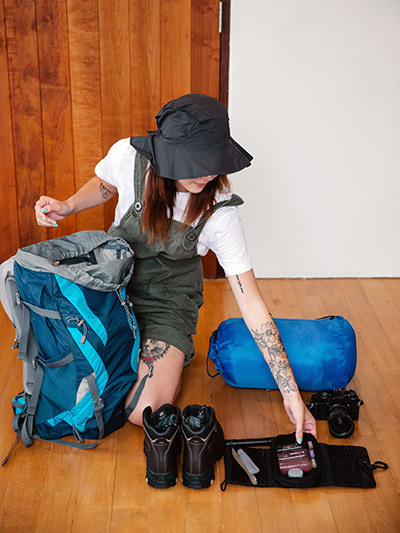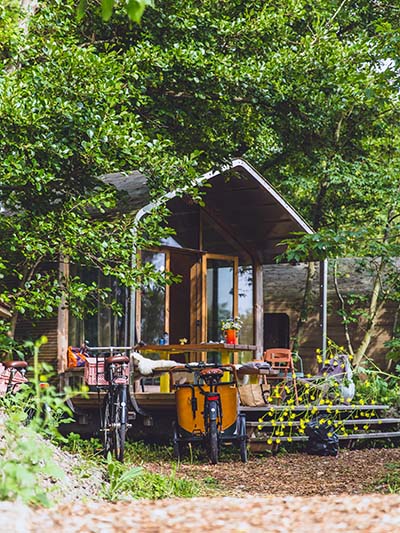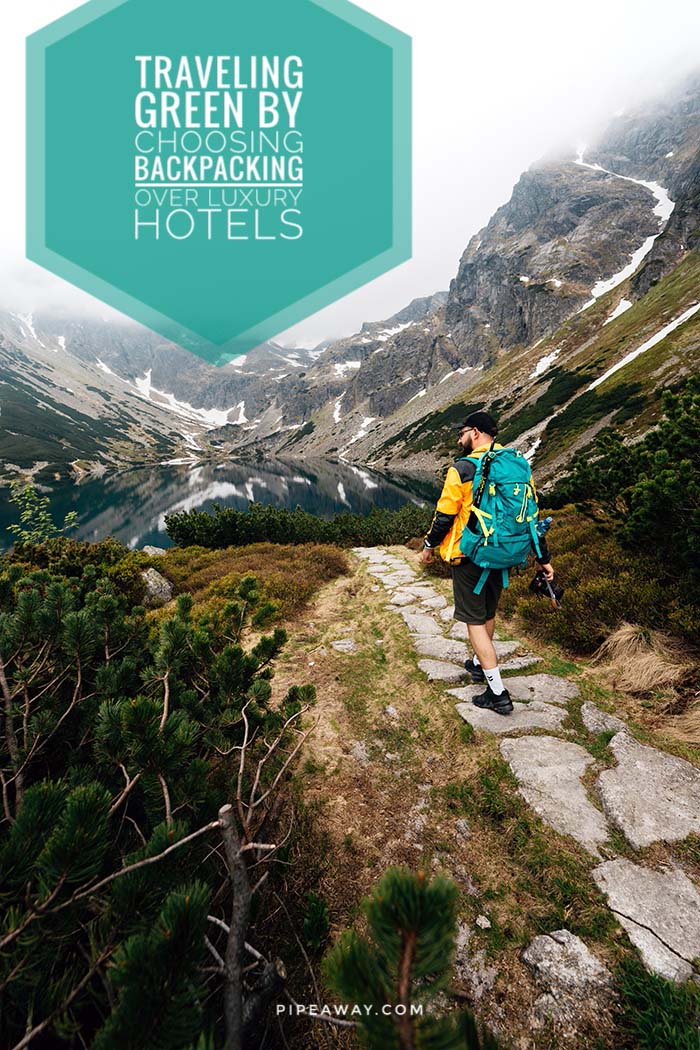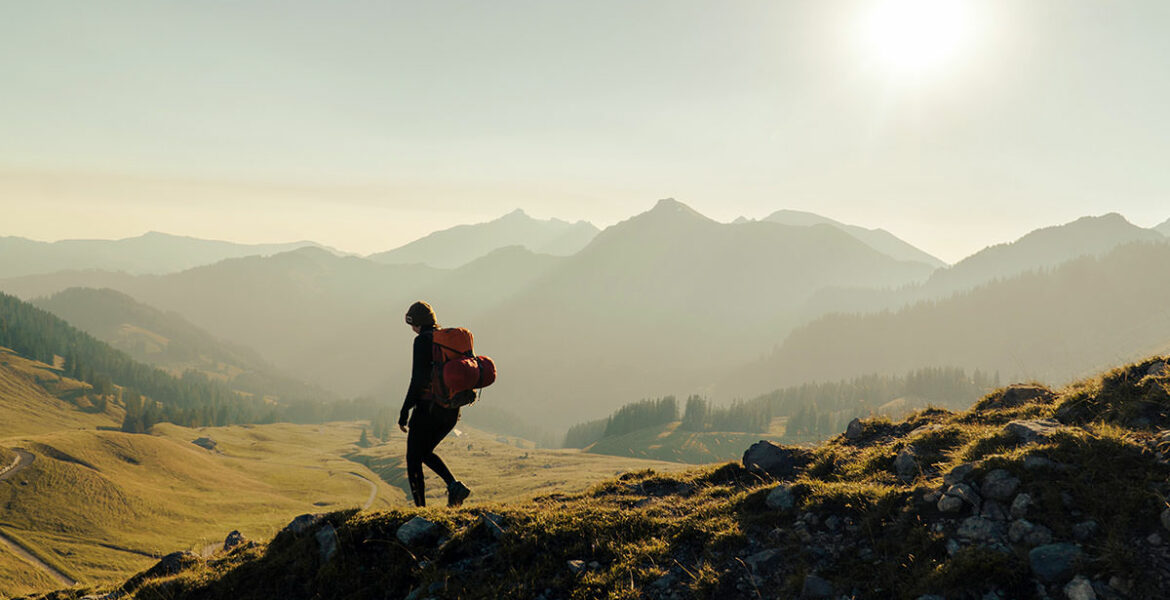Traveling green is no longer just a passing trend; it has become a vital choice. As our planet faces the urgent challenges of climate change, more and more people are awakening to the realization that eco-friendly travel is not just an option but a necessity. If we truly want to transform from being part of the problem to being part of the solution, embracing green trips is the way forward.
Shifting from luxury hotel stays to adventurous backpacking trips offers a greener way to explore the world
The Earth is teeming with an increasing number of explorers, and this surge in global tourism has placed immense strain on overcrowded tourist destinations. Take Dubrovnik, the picturesque mecca of Croatian luxury tourism, for example. Overwhelmed by the cacophony of noisy tourists, the city has resorted to an unprecedented measure this year: you can bring any type of luggage with you, but if you want to roll it down their cobbled streets, that will cost you a fine! Until levitating car producers discover the niche of levitating suitcases, there is a simple and comforting solution at hand: green backpacking.
As global awareness of environmental issues increases, many of us are looking for ways to reduce our carbon footprint, and one area where significant changes can be made is in the way we choose to travel.
Shifting from luxury hotel stays to adventurous backpacking trips offers a greener way to explore the world. In today’s article, we will unravel the secrets of traveling green and show you how to embark on an eco-friendly adventure. Join the movement toward a more sustainable future!
Embracing the green backpacking lifestyle
Choosing the backpacking lifestyle is about more than just swapping out a hotel key for a tent; it is about adopting a mindset of sustainability, efficiency, and respect for nature.
With the right approach, you can retain the comfort and quality of your travel experience while significantly reducing your environmental impact.

Pack light and choose sustainable gear
One of the cornerstone principles of backpacking is packing light. This doesn’t just make your journey easier; it also minimizes the energy required for transportation, thereby reducing your carbon footprint. To embrace this principle:
- Assess your needs: Carry only the essentials. Carefully consider the utility of each item you pack. If it doesn’t serve a crucial purpose, leave it behind.
- Choose multi-purpose items and clothing: Gear that serves multiple functions can reduce the overall volume and weight of your backpack. But don’t forget to consider the weather conditions at your destination! For instance, if you’re preparing for a trip to cold regions, it’s wise to add a synthetic insulated jacket, perfectly suited to the expected temperature.
- Opt for lightweight and compact gear: Lightweight items reduce your backpack’s overall weight, making your journey more efficient. Look for compact gear that takes up less space.
Moreover, make a point of choosing sustainable gear to further minimize your environmental impact:
- Seek out eco-friendly brands: Some manufacturers prioritize sustainable materials and processes. Look for these brands when choosing your gear.
- Opt for durability: Durable goods might be more expensive upfront, but they last longer, which is both economical and better for the environment in the long run.
Traveling green fundamentals: Respect local ecosystems
Respecting local ecosystems is a fundamental part of the green backpacking ethos. Here’s how to ensure your presence is as non-disruptive as possible:
- Stay on established trails: Straying off the trail can harm fragile flora and contribute to damaging erosion. Stick to the designated path to minimize your impact.
- Keep noise levels down: Noise can disrupt local wildlife. Keep your volume low, especially in sensitive habitats.
- Camp in designated areas: Designated camping areas have been carefully selected to minimize the environmental impact of human presence. Always use these areas when available.
The ripple effect of choosing green backpacking
By choosing green backpacking over luxury hotels, you are reducing your environmental footprint. However, your positive impact doesn’t stop there. Your choices can have a ripple effect, influencing others and supporting shifts in industry practices.
Inspire others to travel green
Your decision to travel green can have a significant influence on your social circle. Here’s how you can inspire others:
- Share your experiences: Talk about your backpacking trips, the stunning natural sites you’ve visited, and how traveling green and light has enhanced your travel experience.
- Discuss your reasons: Explain why you’ve chosen green backpacking and the benefits it has brought you – and the environment.
- Show it’s doable: Demonstrate that backpacking is a viable, enjoyable way to travel. This might encourage others to give it a try.

Support sustainable tourism industry practices
Your individual choice to travel green contributes to a collective demand for more sustainable options in the tourism industry:
- Opt for sustainable tour operators: Where possible, choose tour operators who prioritize sustainable practices. This supports their business and encourages others in the industry to follow suit.
- Support eco-friendly accommodations: Even when you’re not camping, you can choose to stay at eco-hostels or other accommodations that focus on sustainability.
- Provide feedback: Let businesses know that their green practices are appreciated. This feedback can motivate them to continue improving their sustainability efforts.
Each step you take towards green backpacking, from packing light to choosing sustainable gear and respecting local ecosystems, is a stride towards more sustainable tourism. As a green backpacker, your actions can inspire others, support eco-friendly business practices, and ultimately contribute to the preservation of our planet.
Luxury hotels vs. backpacking: Environmental impacts
Luxury hotels, while often comfortable and convenient, carry significant environmental impacts. They tend to consume vast amounts of energy and water, produce high levels of waste, and contribute to land and water pollution.
On the other hand, backpacking promotes minimalism, reduced consumption, and a closer connection with nature, making it a more sustainable travel option.

Energy and water consumption
Luxury hotels consume massive amounts of energy for lighting, heating, air conditioning, and other services. They also use large volumes of water for laundry, swimming pools, and landscaping.
Conversely, backpacking in nature encourages minimal energy and water usage. You’ll likely use solar chargers or battery-powered devices for your energy needs, and water consumption is generally limited to drinking and basic hygiene.
When it comes to backpacking, considering the weather conditions of your destination and choosing appropriate gear is essential. The already mentioned insulated jacket can provide the necessary warmth in cold conditions. But choosing the right gear isn’t just about personal comfort; it’s also a strategy to reduce reliance on energy-intensive heating solutions.
Waste generation and land use
Luxury hotels produce vast amounts of waste, from food and packaging to disposable toiletries. In contrast, backpacking encourages a leave-no-trace ethic, promoting responsible waste management, including carrying out what you carry in.
Large-scale construction and landscape alterations for luxury hotels can lead to habitat destruction and soil erosion. Backpacking, on the other hand, requires minimal infrastructure and can be done with a light footprint on the land.
There are also high-end hotels that play a key role in supporting green travel practices. For instance, if you go to Cambodia, you could consider staying at Jaya House River Park. In Ethiopia, you could visit Limalimo Lodge, and in Bali – The Menjangan Resort. Wherever you go, you can find solutions that support a luxury travel lifestyle, but reduce a feeling of guilt; you just need to do your research.
Traveling green while backpacking – Conclusion
Shifting from mainstream luxury hotel stays to less conventional backpacking is a meaningful step towards more sustainable travel. This greener way of exploring the world not only reduces our environmental footprint but also offers a closer connection with nature and local cultures.
Every action taken towards green backpacking makes a difference
Our choices have immense power. From minimalist packing and wearing adequate clothing to practicing “leave no trace” principles and camping responsibly, every action taken towards green backpacking makes a difference.
By sharing our experiences and supporting eco-friendly businesses, we can help inspire a broader shift toward sustainable tourism. Beyond just influencing our immediate circles, we can plant seeds for the collective desire for change.
The time to embrace the green backpacking lifestyle is now.
What are your experiences of traveling green?
Leave your comments below, and pin this article for later!

Disclosure: This post may contain affiliate links, meaning if you click on them and make a purchase, Pipeaway may make a small commission, at no additional cost to you. Thank you for supporting our work! The photographs in this article have been sourced through Unsplash and Pexels. In the order of appearance, the authors are as follows: Backpacker in Swiss Alps (cover image) - Janis Fasel Packing a backpack - Timur Weber Les Cabanes - Bram Van Oost Lightbulb - Nikola Tomašić Backpacker in Tatra Mountains (pin image) - Yevhenii Dubrovskyi


